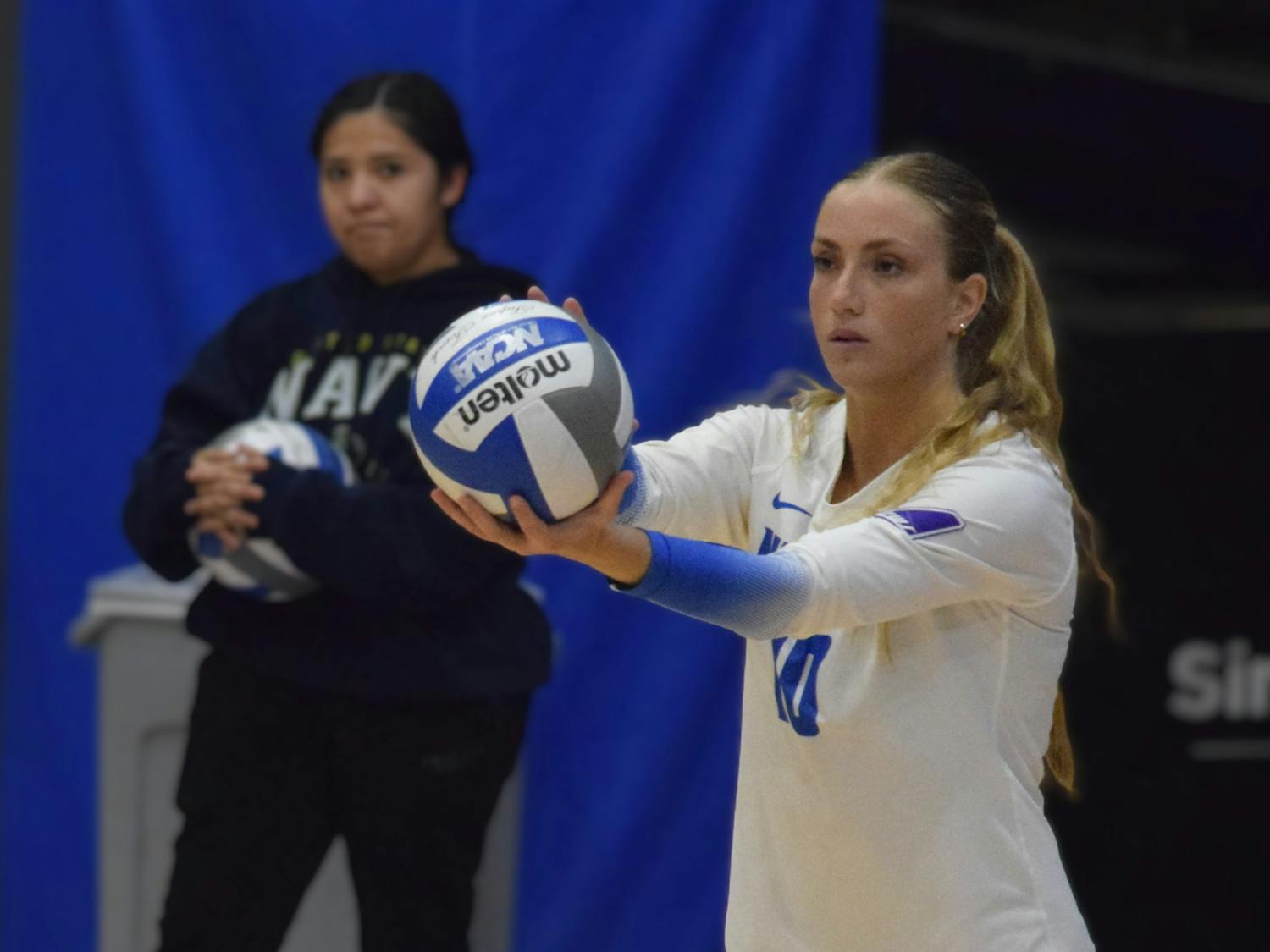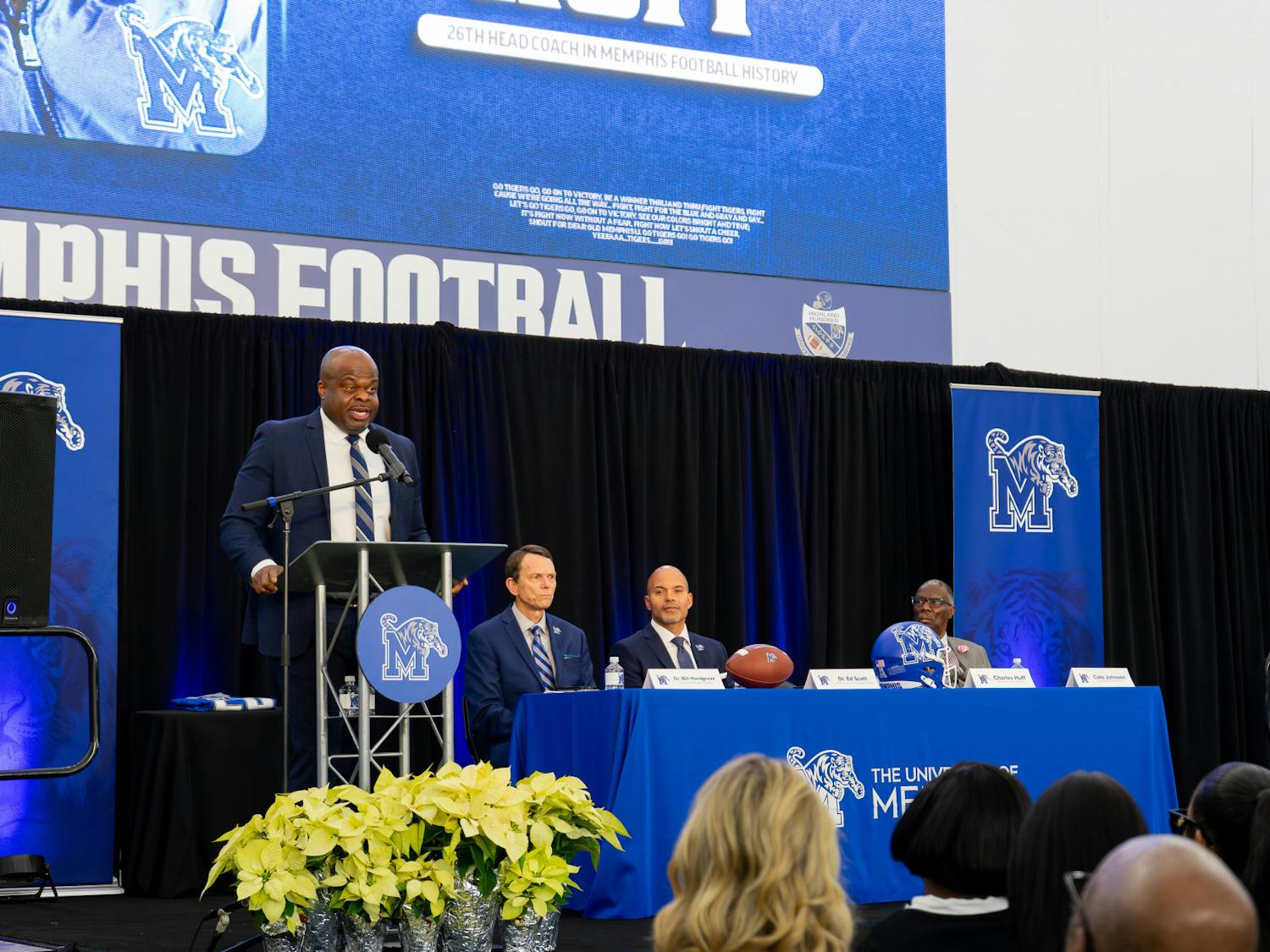New University of Memphis football coach Mike Norvell has a lot in common with his predecessor, Justin Fuente. Both are young, energetic, and, perhaps most importantly, innovative offensive minds.
Norvell, a former Arizona State deputy head coach, offensive coordinator and quarterbacks coach, was selected as the man to replace Fuente, who recently departed to take the Virginia Tech coaching job.
Norvell is considered by some as one of the best young offensive minds in college football, leading a Sun Devils’ attack that finished in the top-40 in total offense in each of his four seasons and top-16 in scoring offense in three of his four seasons.
“We’re going to play fast,” Norvell said at his introductory press conference Friday. “On offense we’re going to take what the defense gives us. We plan on being very balanced – I believe in that. I believe in being able to run the football, and then taking vertical shots over the top.”
A look back at Norvell’s four-year tenure as the offensive play-caller at Arizona State paints a picture of a coach who is willing to adapt his scheme to his personnel.
During Norvell’s first two seasons as offensive coordinator, the Sun Devils ran the ball 57.1 percent of the time for 5,345 yards and 63 touchdowns. In his final two years, Norvell went to a more balanced attack, running the ball 51.7 percent of the time for 4,417 yards and 39 touchdowns.
The reason for the shift towards the passing game in the latter two seasons can be, in large part, attributed to the style of quarterback.
In 2012 and 2013, Taylor Kelly was the quarterback at Arizona State. Kelly, who rushed for 1,128 yards in Norvell’s first two seasons, is what most would consider a spread-style or dual-threat quarterback.
In 2014, Kelly suffered an injury that forced him to miss three games in the middle of the season and forced junior Mike Bercovici, known more for his passing ability rather than a runner, into action.
During Kelly’s 10 healthy games in 2014, Arizona State threw the ball an average of 27.8 times per game. That number jumped to 48.7 passing attempts per game in Bercovici’s three starts.
Bercovici was named the full-time starter in 2015, and the Sun Devils continued to play to their senior quarterback’s strength – passing – attempting nearly 40 passes per game.
“I believe in not just being one-sided in any aspect of the game,” Norvell said.
By the numbers, Norvell’s offense when he had a more capable running quarterback, and Fuente’s offense the last two seasons with Memphis quarterback Paxton Lynch are relatively similar. Memphis ran the ball 57.1 percent of the time in 2014 and 2015 – the exact percentage of times Arizona State ran the ball in 2012 and 2013 with Kelly at quarterback.
Arizona State running back D.J. Foster, who was a freshman during Norvell’s first season calling the plays, is a perfect example of how the new Memphis head coach likes to use his running backs in a variety of ways.
Foster has totaled 215 catches for 2,418 yards and 441 carries for 2,351 yards through his four seasons in Norvell’s offense. Running backs other than Foster also totaled 184 catches in his four seasons. All told, running backs are catching almost exactly 100 passes per season in Norvell’s offense, showing his ability to involve multiple positions in the passing game – including tight ends, who caught 163 passes in his four seasons.
For comparison, running backs caught 143 passes in Fuente’s four years, and that’s including 54 career receptions from Sam Craft, who lines up as both a running back and a receiver. Without Craft, Memphis’ running backs caught about 22 passes per season, or less than two per game, compared to Norvell’s running backs who were catching right around eight passes per game.
Fundamentally, Norvell’s offense is a spread offense. But, he is not linked to one particular subset of the spread offense. He threw out the term ‘multiple’ when describing his offense at the introductory press conference, and that’s exactly what Tiger fans should expect.
Arizona State has many different formations it threw at opponents during Norvell’s tenure. The Sun Devils often had three or four wide receivers, but there were times when they would go five-wide or motion the lone back out of the backfield to be the quasi-fifth wide receiver.
Norvell also had several formations that involved the usage of two tight ends. Often times the tight ends would be together on one side of the ball, one on the line of scrimmage and the other shifted off the line. The Sun Devils often ran out of this formation, but they also had several play action or quick passes, too.
The pistol, a shotgun formation where the quarterback is in front of the running back, was another formation Norvell used quite a bit. One play that seemed prevalent out of the pistol was what’s often referred to as ‘package plays.’
Package plays are something the University of Oregon often used under former coach Chip Kelly and still uses under current Ducks coach Mark Helfrich. Essentially, it is like running two plays at the same time, and the quarterback, during the play, decides which play he wants to join.
The initial play for the quarterback is your standard read option where the quarterback reads the defensive end’s move and decides whether to hand the ball off or keeps it. If the quarterback read keeps, he will then sprint out to the side of the field where another play is being run. There are normally two or three wide receivers to this side, and they are running a bubble screen or a quick slant or some combination of the two.
If the throw is open, the quarterback can then throw the screen or the slant. If not, he can elect to keep the ball and run.
This all sounds complicated, but it happens within about two or three seconds, and it forces the defense to react quickly and make multiple decisions. They only have to make the wrong choice once, and Norvell’s offense can burn them.
Norvell will also use shotgun sets where he has two running backs, one to either side of the quarterback. Running plays seem to be most likely out of these sets, but Arizona State would often send one on the running backs in motion before the snap of the ball and throw him a bubble screen with wide receivers blocking for him.
Or the receivers would run routes, running the defenders away and the quarterback would throw what’s known as a swing pass to the running back, who can catch the ball in a full sprint.
Norvell talked about some of the influences on his offensive scheme that included Fuente, whom he met with this past spring, current Auburn head coach Gus Malzahn, and former Clemson offensive coordinator and current SMU head coach Chad Morris – all of whom run the spread offense, but they all do it in their own way.
“(Fuente and I) are going to be similar on offense,” Norvell said. “But we each have our own wrinkles.”





